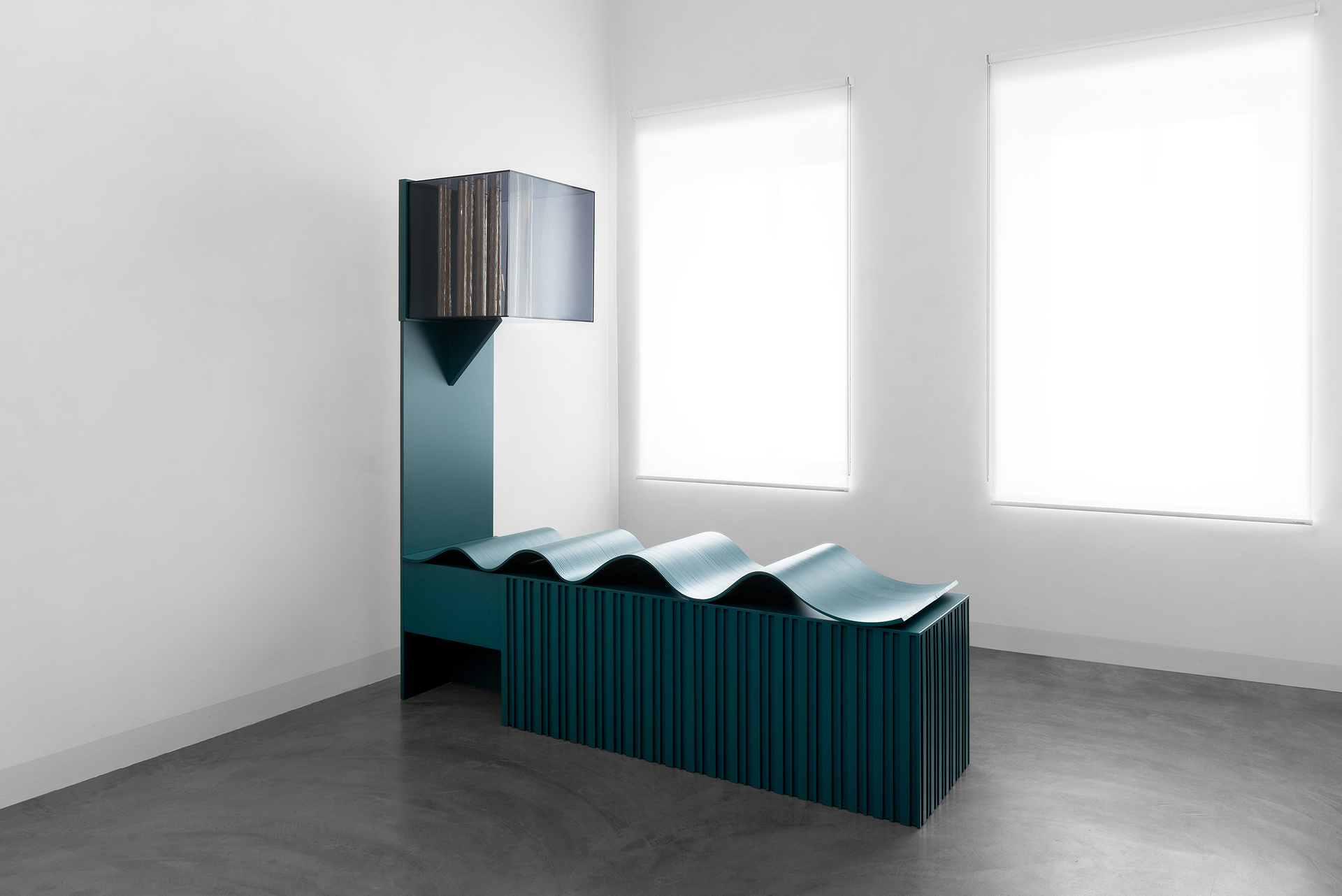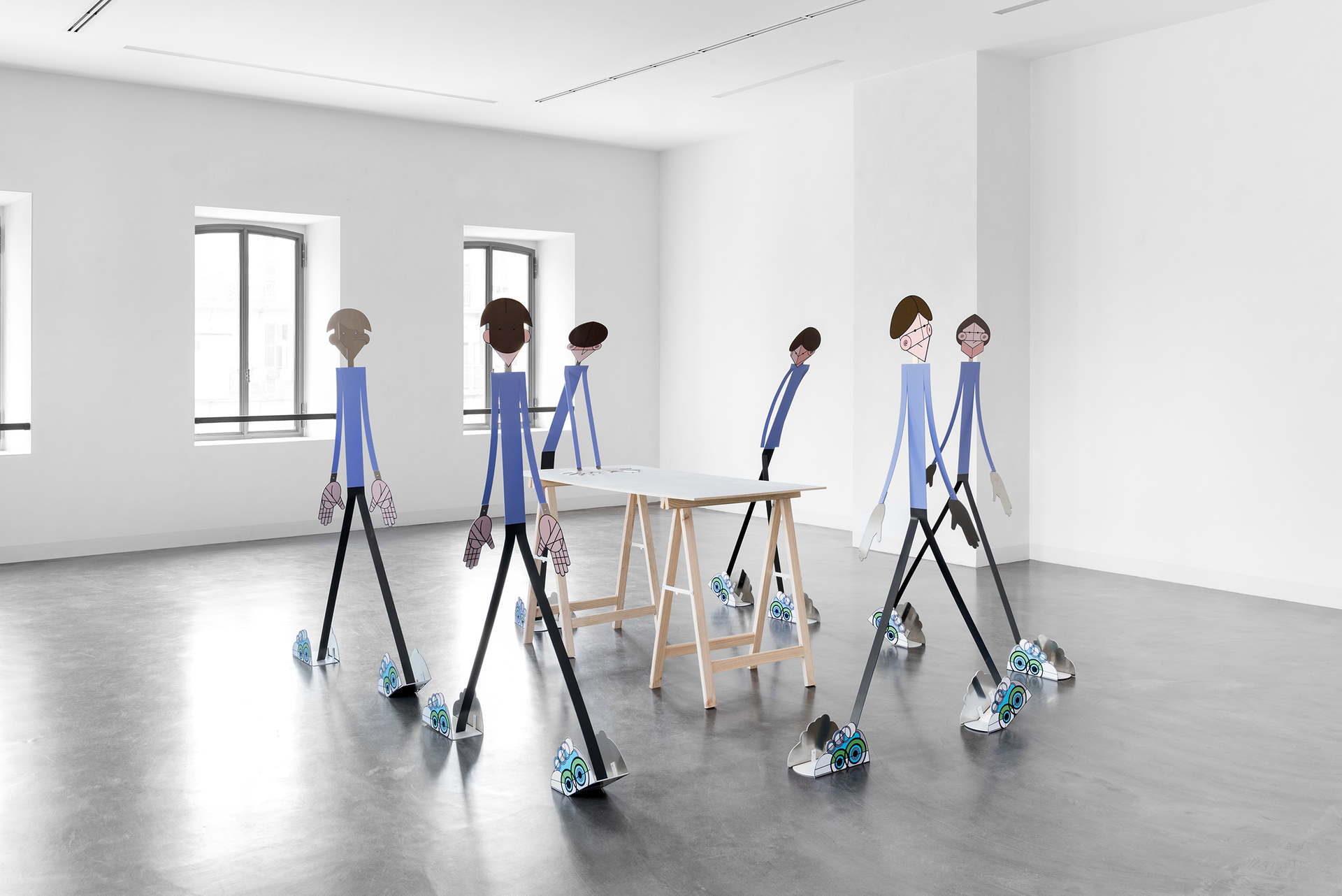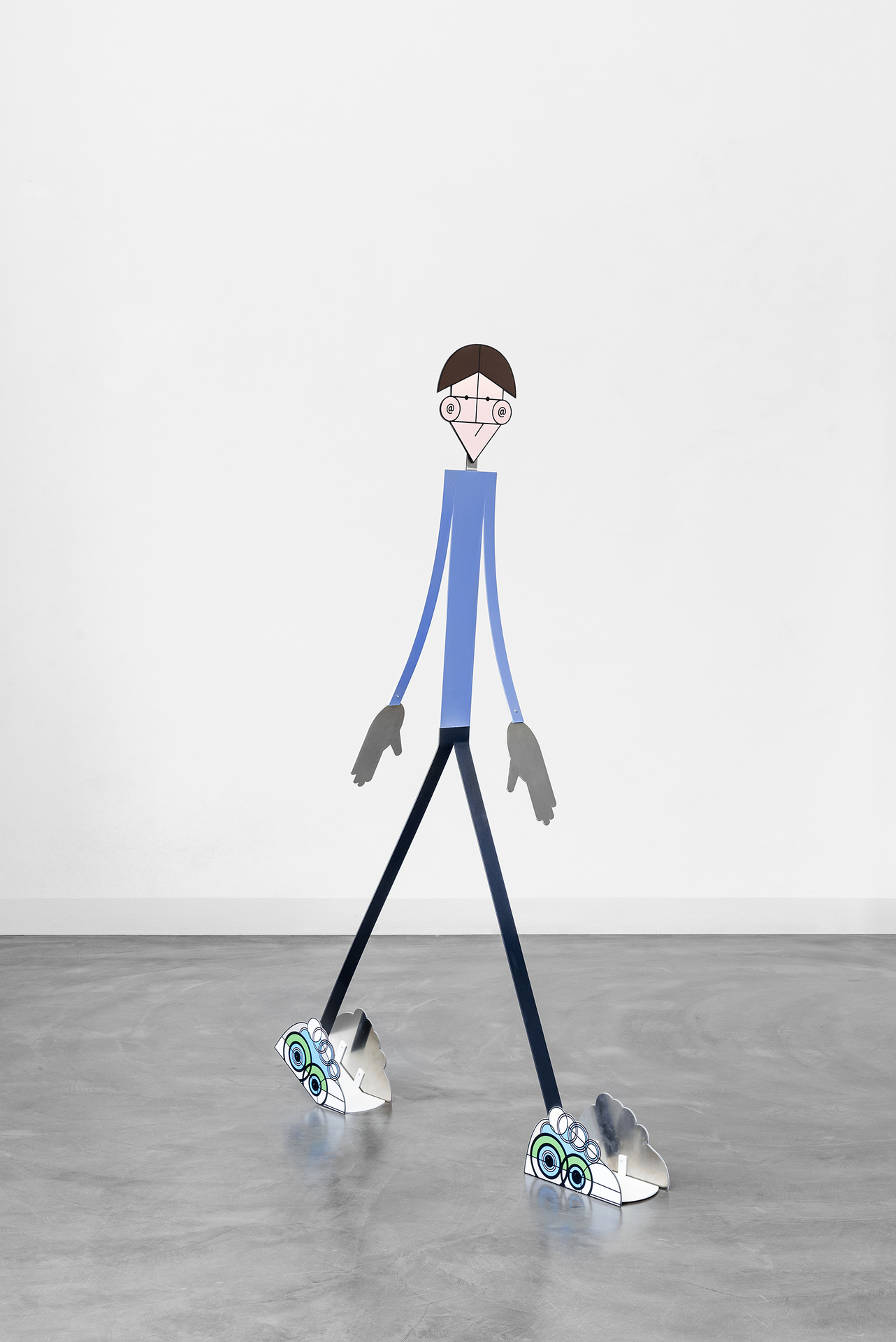Archive
2022
KubaParis
SOGNIDORO







Location
Spazio Sanpaolo InvestDate
27.05 –06.07.2022Photography
Michela PedrantiText
Sognidoro: the emotional universe of Federico Cantale
During one’s career, every artist struggles with the juxtaposition between his or her expectations, the emotional planes that arise from them, and the powers that govern the art system. In different forms, one experiences disappointments and failures as well as surprises and fortunate encounters. The precariousness of this universe of relationships often takes space within the research itself, becoming fertile ground for transforming a missed opportunity into a new group of works.
Federico Cantale tackles this emotional landscape and takes us inside the desires,
nightmares and daydreams of a character, perhaps an avatar of the artist, who inhabits different conditions of creative thought.
Dreaming, idleness, frantic unhinging, are visualized through the presentation of four scenes within which the protagonist changes inhabiting different forms.
The dream world welcomes the audience to the exhibition, represented by the work
Incubo (Nightmare), 2022: a large bed covered by a rippled blanket topped by a cubic
headboard. The work refers to the theme of nightmare and the experience of artistic failure, becoming what the artist calls a true “dream device” capable of containing their different forms in specific exhibition moments. The work dialogues with two past works that have influenced the development and re-elaboration formal trappings, in which various unconscious and subconscious experiences can visualize themselves.
A space that for Fabro had the measure of his own body and became a device of
relationship with his surroundings by placing the emphasis on the artist and his area of action, even before the sculptural object.
Advancing to the main room of the exhibition we get to know our character - artist,
creative, simple young man in search of inspiration - represented according to different sculptural techniques previously explored by the artist.
Cantale often begins to produce from a sheet whether it is aluminum, wood, brass or
glass, which is reworked three-dimensionally through its cutting folding (Thinking with Feet, Polimorf 2, 2022), layering of multiple units (They Will Forget You, Polimorf 1, 2022) or simply assembling flat surfaces into a volume (Too loud a solitude, Polimorf 3, 2022). These procedures may seem seemingly simple: on the one hand they refer to an almost playful dimension of volume generation-all of us overwhelmed by the boredom summer we have tried at least once to build a castle by overlapping and assembling the cards of a playing deck-on the other hand, they are instead generated by meticulous and precise planning. Indeed, what immediately strikes one when observing Cantale’s sculptures is that they belong to a system of representation governed by geometry and a digital planning of volumes that develops from the transformation of forms carried out on a flat surfacephysical or virtual-into solids. The artist thus delineates a sculptural practice that seems precisely to be based on changing techniques of representation through a precise play of projections in which twodimensional images are reworked into multiple presences.
It is no coincidence that the creation of these different projections and presentations of the same through its different versions, relates in the exhibition to a reflection on the states of digression of thought, referring precisely to that transfiguration of oneself that each of us perceives in the moments of absence of purely logical reflection, caused by anxiety, fear of failure, lack of ideas.
The observation of changes on the self-perceptive plane leads Cantale to imagine a kind of emotionally generated metaverse in which different states of inner turmoil mutate our character in poses, materials and forms.
The avatar slumbers and multiplies when he is intent on thinking while moving frantically around the room; he becomes statuesque and composed of stylized shaped volumes as he spends time glued to his smartphone; he assumes a unique structure with references to the narrative context reduced to a simple color palette as he reads and rambles on about his ambitions, daydreaming about achieving important career goals. While Cantale works with the construction techniques typical of serial production, with the imagery of digital communication and, generically, of mass-media language, what interrupts this lexicon and becomes the perturbing element on which to base the work is the focus on the intimate and sentimental dimension.
In fact, the emotional world presented and traversed with sincerity and spontaneity is the constant background of Cantale’s research, which presents us with a sculptural expressiveness that does not need the usual accentuation of the artist’s direct action on the material, but is based on a formal essentiality. The universe of emotions provoked by desires, fears and frustrations never takes on a violent presence but is addressed through its simplification into imagery related to childhood, to that narrative mediation typical of the short story. In the exhibition, the nightmare takes on an almost fairy-tale presence by being translated into the simple image of a person who seems to chase us through the woods (Incubo (Nightmare), 2022). The title Sognidoro itself is a wish for a peaceful nightwhich will not be for the tormented artist-in a desire to extend the power of the narrative device of a fairy tale just told to that unknown and dark that passes through us during the night. “Sogni d’oro” (Sweet Dreams) is also the ironic wish of a grown child who momentarily returns to a belief in simple resolutions and imaginative presences.
Human fears thus find explanation in the language created over the centuries to explain without distorting the contradictions and fears of existence.
But what does our character feel? What is the constant presence that persists despite his inter-dimensional transformation?
Tenderness in his ability to translate an external perception into an empathetic and
nonviolent attitude becomes an intangible landscape within which he takes voice. The
doors of his home-studio open showing us the daily confrontation with the creative
process and ambitions of an artist, in a visit without masks, devoid of artificial
performances of efficiency. What remains is the simple but essential need to make art, starting from one’s own emotional universe, which is visualized by abandoning the image of the saturnine artist, demiurge and unabashedly virile and damned, which here is exposed with fragility in all its possible projections.
Caterina Molteni
Caterina Molteni